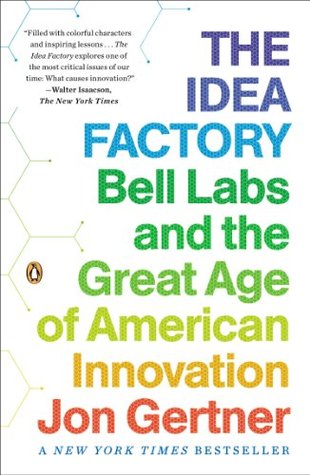More on this book
Community
Kindle Notes & Highlights
basic research—that is, research that generally had no immediate application to a product or company effort but (as in Davy’s case) sought fundamental knowledge regarding the deeper nature of things,
applied research, which was defined as the kind of investigation done with a specific product or goal in mind.
An industrial lab, he said, “is merely an organization of intelligent men, presumably of creative capacity, specially trained in a knowledge of the things and methods of science, and provided with the facilities and wherewithal to study and develop the particular industry with which they are associated.”
modern industrial research was meant to apply science to the “common affairs” of everyday
the industrial lab was a challenge to the common assumption that its scientists were being paid to look high and low for good ideas.
there were plenty of good ideas out there,
Mainly, they were looking for go...
This highlight has been truncated due to consecutive passage length restrictions.
“Our job, essentially, is to devise and develop facilities which will enable two human beings anywhere in the world to talk to each other as clearly as if they were face to face and to do this economically as well as efficiently.”
if good problems led to good inventions, then good inventions likewise would lead to other related inventions, and that nothing was too small or incidental to be excepted from improvement.
At the start, forces that precede an invention merely begin to align, often imperceptibly, as a group of people and ideas converge, until over the course of months or years (or decades) they gain clarity and momentum and the help of additional ideas and actors. Luck seems to matter, and so does timing, for it tends to be the case that the right answers, the right people, the right place—perhaps all three—require a serendipitous encounter with the right problem. And then—sometimes—a leap.
he looked forward to the time when we would get all of the relays that make contacts in the telephone exchange out of the telephone exchange and replace them with something electronic so they’d have less trouble.
Kelly had set an intriguing goal that lingered in Shockley’s mind as he finished his indoctrination program and turned back to studying the physical properties of solid materials on his own and with his study group. Kelly’s articulation of a solution—a product, in essence—was fairly straightforward, even if the methods for creating such a product remained obscure: Perhaps the Labs could fashion solid-state switches, or solid-state amplifiers, with no breakable parts that operated only by way of electric pulses, to replace the system’s proliferating relays and tubes.
Engineers at the Labs knew that the gulf between an invention and a mass-produced product could in some cases be extraordinary, even insurmountable. “Could the new magnetron be reproduced quickly and in quantity?”
“Was its operating life satisfactory? Could its efficiency and output power be substantially increased? Could one construct similar magnetrons at [wavelengths of] forty centimeters, at three centimeters, even at one centimeter?”
analyzing an existing device so he could work out a research plan he would then use for development.
he couldn’t just make a magnetron bigger or smaller to get different outputs in microwave power and wavelength; engineering the device for ships and planes and other uses involved a careful consideration of everything about the magnetron—the size and number of its internal cavities, the shape of those cavities, its input voltage, and so on.
had Brattain and Bardeen made a discovery, or an invention?
A discovery often describes a scientific observation of the natural world—the first observation of Jupiter’s moons, for example, or the isolation of a bacteria that causes a deadly plague. Also, a discovery could represent a huge scientific achievement but an economic dead end.
An invention, by contrast, usually refers to a work of engineering that may use a new scientific discovery—or, as is sometimes the case, long-existing ones—in novel ways.
What seemed fair to say, though, was that the transistor was not yet an innovation.
term “innovation”
Originally it described the introduction into society of a n...
This highlight has been truncated due to consecutive passage length restrictions.
If an idea begat a discovery, and if a discovery begat an invention, then an innovation defined the lengthy and wholesale transformation of an idea into a technological product (or process) meant for widespread practical use.
“It is not just the discovery of new phenomena, nor the development of a new product or manufacturing technique, nor the creation of a new market,” he later wrote. “Rather, the process is all these things acting together in an integrated way toward a common industrial goal.”
two corollaries to Morton’s view of innovation: The first is that if you haven’t manufactured the new thing in substantial quantities, you have not innovated;
the second is that if you haven’t found a market to sell the product, you have not innovated.


